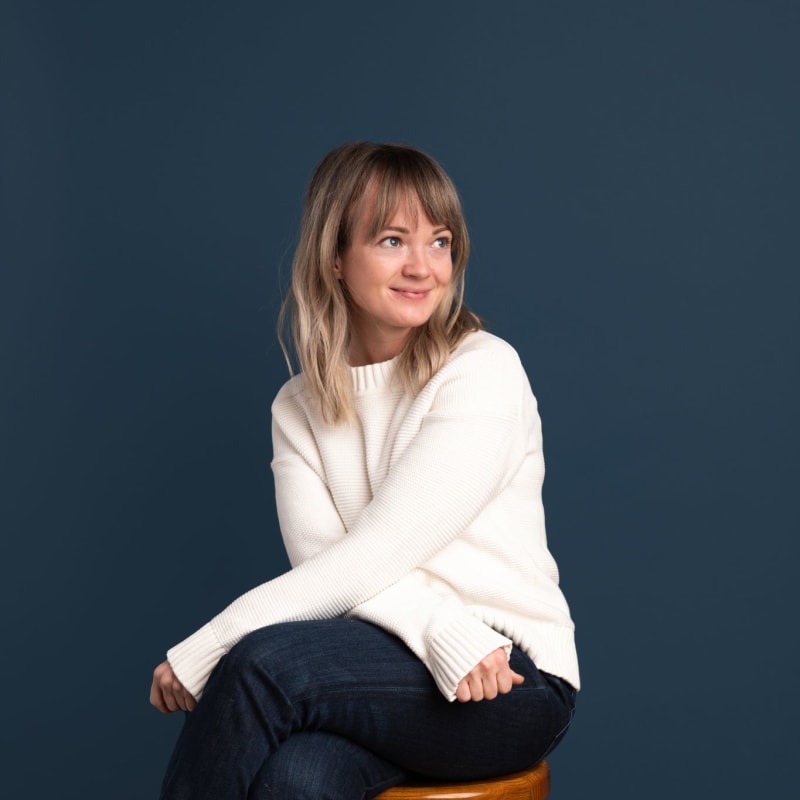What Does a Chief Product Officer Do? (Roles, Salary, How to Hire)
Discover what makes a great CPO, their key responsibilities, necessary skills, and innovative hiring models for your business's growth.
Looking for a Chief Product Officer for your business?
A CPO steers the product vision, strategy, and execution. They ensure that your company's product offerings not only meet market demands but also set new benchmarks for user satisfaction and strategic growth.
However, hiring a CPO can be a tiresome process full of unknowns.
This article breaks down the CPO role, exploring key Chief Product Officer responsibilities, the indispensable skills they must possess, and the hiring models that businesses can leverage.
What’s more?
You’ll discover an effective alternative to the laborious CPO recruitment process that’ll help you find the right fit for all your product management needs.
Further Reading:
- Learn what a fractional executive is and how you can hire one.
- Find answers to all your burning questions about how to hire a COO and discover how a fractional COO might be an alternative.
What Is a Chief Product Officer (CPO)?

A Chief Product Officer (CPO) holds the reins of product management and often operates at the intersection of technology, user experience, and business strategy.
Tasked with the comprehensive oversight of a company’s product portfolio, they work alongside the Chief Executive Officer, Chief Technology Officer, other key members of the executive team, and senior product managers.
Their responsibilities span from ideating innovative product features to managing product life cycles while ensuring products deliver value to customers and drive business success.
In essence, the Chief Product Officer is accountable for product success, guiding its journey from conception through development to market leadership.

- Product Strategy
- Roadmap Planning
- Fractional CPO
- Product Vision
Product strategist & consultant | former Head of Product @ Zapier | Founder in climate tech
What Are the Typical Responsibilities of a CPO?
Explore the pivotal responsibilities of a Chief Product Officer, from product innovation to leading dynamic teams toward excellence.
1. Developing and Executing Product Vision
A CPO excels at blending customer insights, business goals, market analysis, and industry knowledge to build an ambitious view about how your product can grow.
Their intuitive grip on what the user needs means they’re best positioned to craft a strategy to capture product opportunities across new markets, customer segments, or product offerings. Your CPO will also bring an informed point of view about what an existing product should morph into over the next 3-5 years.
Through it all, they keep your company’s strategic priorities on top when making any decisions in product development.
2. Overseeing Product Strategy and Execution Across Teams
A CPO can marshal a product team of top-tier engineers and designers to turn ideas into tangible products.
Their leadership ensures seamless integration of product strategy and execution.
3. Ensuring Team Cohesion and Cross-functional Collaboration
The CPO ensures product development, marketing, sales, customer service, and engineering teams all pull in the same direction. Their product planning process builds alignment on product goals and facilitates communication across departments, ensuring everyone is working together effectively.
4. Advocating for Data-Driven Decision Making
Beyond championing the product internally, the CPO rigorously defines and tracks success metrics, such as customer satisfaction scores, user engagement rates, market share growth, and product performance.
They roll out systems of accountability to track progress against outcomes and ensure that the team is working toward clear and measurable goals. This is often done in partnership with a data leader.
Based on the results of these analytics, your CPO refines product strategies and highlights the product’s value to stakeholders, effectively shaping its success and market position.

- Head of Product
- Product Leader
- Fractional Product Leader
- CPO
Hello! I'm a product leader focused on building AI Products from 0 to 1 to scale.
5. Driving Product Lifecycle Management and Roadmap Development
From concept to launch, the CPO meticulously integrates feedback and market insights to refine the product, charting a clear product roadmap and ensuring it meets evolving user demands.
This involves careful consideration of customer needs, business needs, risks, and technical challenges.
The CPO excels in building, nurturing, and managing a diverse and talented product team, creating an adaptable and innovative environment.
More importantly, they bring a product-focused approach to all aspects of the business and hone the next generation of product leaders within your organization.
They can balance multiple projects and priorities, scaling the product department effectively and setting quantifiable objectives to ensure your organization remains agile and prepared for challenges.
You may notice that the responsibilities of Chief Product Officers are multi-faceted, so they will require a number of skills to fulfill their job effectively. Let’s dig into those, so you know what to look for.

- Strategic Partnerships
- Product Management
- Scalability
- Distributed Systems
Product Executive (SVP, CPO, Sr. Director at Google) | Coach | Advisor
What Skills and Qualifications Should a CPO Have?

Here’s a breakdown of the strategic, interpersonal, and technical skills your CPO should have:
1. Leadership Skills and Vision
A CPO's vision isn't just about anticipating market trends; it's about creating them. They must be able to envision the next big leap in product development while fostering an environment where creativity and strategic thinking flourish among team members.
2. Collaboration, Mentorship, and Communication Skills
A CPO must communicate clearly so they can foster collaboration across different departments. They should also excel in mentoring team members, enhancing their growth and productivity.
3. Analytical Mindset and Business Acumen
Your CPO has to analyze market trends, user data, and financials to make informed decisions. They require an analytical mindset and business acumen to leverage product analytics with agility and insight.

- Fractional CPO
- Product Strategy
- Growth
- UX
Building B2C startups for 13+ years | strategy, growth, innovation, leadership
4. Customer-Centric Approach
A CPO must keep the user's needs at the forefront of product development at all times. When they tackle problems or execute strategies, they must ensure the solution remains relevant and valuable to the customer experience.
5. Educational and Professional Foundation
While specific degree requirements can vary, a background in business, technology, or a related field is often a prerequisite for a CPO role. Besides this, they should have real-world experience in product management or development.
6. Continuous Learning and Professional Development
From quantum leaps in core technology to stringent compliance requirements, any shift in the industry can have a massive effect on your product development process. In order to run a tight ship despite changing trends, your CPO should commit to continuous learning and updating themselves with the latest trends.
Clearly, it takes a lot to make a CPO. And your company’s technological relevance relies on the right hire. The high stakes make finding a CPO for the long haul that much harder._ _
But did you know that you don’t always need to hire a full-time CPO to reap the benefits of having one on your team?
That’s right!
Let's learn the different ways in which you can engage a CPO besides full-time employment.
3 Types of CPO Hiring Models + Expected Salary Ranges

A CPO is an indispensable hire for any product-first company. But this doesn’t mean spending beyond your means to hire a full-time CPO.
The market today offers you options to hire interim and fractional CPOs as well — at a fraction of the cost but offering full value!
Take a closer look at all three of these CPO hiring models and how much each of them will cost you:
1. Full-time Chief Product Officer
A full-time CPO will cost you between $260,801 and $326,701 annually, making them the most expensive type of hire for this role. This figure does not include bonuses, benefits, or equity compensation that are typically offered as part of a full-time Chief Product Officer salary package.
2. Interim Chief Product Officer
An interim CPO fills in a temporary vacancy during an employee’s long leave or sabbatical or while you look for a more suitable candidate to fill the role. Hiring an interim executive means you can save up on the benefits and perks that you’d normally pay a full-time employee. However, the base salary of an interim CPO is still quite high.
3. Fractional Chief Product Officer
A fractional CPO works with your company part-time while they pursue other projects the rest of the time. This arrangement lets you retain your CPO for much longer than an interim employee and costs way less than a full-time one. Typically, you can hire a fractional CPO for a monthly retainer of $10,000–$20,000, all without paying any additional compensation, benefits, or bonuses.
Not only is this arrangement budget-friendly, it opens up your company to hire highly experienced and skilled CPOs whom you’d normally be unable to hire full-time.

- Advisor
- Leadership
- Team Building
- Product Strategy
fCPO (ex-Google, ex-Square, ex-Sequoia backed Head of Product)
Your company can easily hire a fractional CPO via a professional recruitment agency, such as Go Fractional.
But first, let’s see what the routine procedure to hire Chief Product Officers usually looks like.
What Does a Typical CPO Recruitment Process Look Like?

The recruitment of a Chief Product Officer demands a structured and strategic approach.
Here’s what the typical process entails:
1. Defining the Role and Requirements
Start by outlining the specific responsibilities, skills, and experience required for the role. To do this, discuss requirements internally as well as study sample job descriptions.
This clarity helps in attracting candidates who are a good fit for your organization's needs and culture.
2. Sourcing Candidates
Publish your job description on reputable job sites. Use a mix of executive search firms, professional networking sites, and industry connections to find a diverse pool of qualified candidates.
If you’ve chosen to go the fractional route for your CPO vacancy, then get in touch with Go Fractional before moving forward.
3. Initial Screening and Interviews
First impressions count.
Conduct initial interviews to gauge the candidates’ understanding of the role, their experience, and how they align with your company's vision and culture.
4. In-depth Interviews and Assessments
Further interviews with key stakeholders and tailored assessments provide insights into the candidates' strategic thinking, leadership skills, and compatibility with your team.
Use this stage to ask nuanced questions to gauge their personality and general culture fit.

- Strategic Planning
- Team Leadership
- Cofounder
- Integration
Multiple Exited Founder (last exit $200m) & CPO - Focused on B2B, B2B2C SAAS, AI, Deep Tech
5. Reference Checks and Final Evaluation
Perform thorough reference checks to confirm the candidates’ past achievements and work ethic. Use this information, along with assessment results, to make an informed decision.
6. Offer and Negotiation
Present your chosen candidate with a compelling offer that reflects the value they bring to your organization. Be prepared to negotiate terms that satisfy both parties.
7. Onboarding Planning
Plan a structured onboarding process to integrate the new CPO into your organization, ensuring they have the support and resources needed to succeed from day one.

- Fractional CPO
- Product Lead
I excel at orchestrating flawless client experiences that delight clients, foster loyalty, and fuel growth
Now, this may sound like a long-winding process with a hefty bill at the end of it.
But it doesn’t have to be.
For one, you can hire a fractional CPO and save significantly. Additionally, you can partner with a professional agency to take over the entire process for you and reap the benefits of fractional recruiting.
Here’s how:
Hire a Fractional CPO through Go Fractional Today

Go Fractional is a hub for leading fractional professionals that promises the best CPO candidates for your business. These leaders are skilled in aligning product strategy with organizational goals, enhancing user satisfaction, and driving product-led business growth.
We simplify the process of connecting with experienced Chief Product Officers, enabling you to concentrate on your primary business objectives.
Here are some advantages of using Go Fractional to hire a Chief Product Officer:
- Gain access to exceptional leadership without the full-time salary or equity commitment.
- Reduce overhead costs associated with payroll taxes, healthcare, leave benefits, and equipment.
- Tap into a pool of experienced professionals who have tackled the challenges you're facing.
- Flexibility is key; our fractional CPOs are ready to start swiftly, eliminating the need for a full-time commitment.
- Enjoy our straightforward fee structure.
- Trust in our thorough vetting process, aimed at selecting leaders who demonstrate proven success and versatility in their fields.

How We Screen Fractional CPO Candidates
Take a look at our meticulous selection criteria:
- Applications: We focus on candidates with leadership skills and requisite experience in product development.
- Interviews: Through comprehensive interviews, we assess their fit with your specific needs and our community's standards.
- Profiles: Candidates must present a detailed account of their previous projects and achievements, showcasing their ability to innovate and lead.
So what are you waiting for?
Your search for the perfect fractional Chief Product Officer ends here!
Connect with our talent team, and we'll manage the rest, ensuring you connect with the right talent for your product success.
